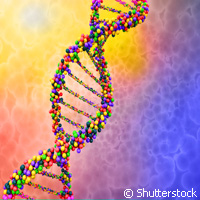Scientists identify genetic sequence of structural variants
An international team of researchers have successfully identified the genetic sequence of 28,000 structural variants (SVs). This groundbreaking study, presented in the journal Nature, effectively brings to light the most detailed map of structural variation in the human genome. Researchers could use the map to determine the genetic causes of human diseases and shed light on why some parts of the human genome mutate more frequently than others. Ultimately, clinical geneticists will be able to limit their searches to mutations that trigger diseases. The researchers evaluated data from 185 human genomes sequenced in the course of the '1000 Genomes' project, a massive international research effort kick-started in 2008 to establish the most detailed catalogue of human genetic variation. They pinpointed more than 1,000 SVs, also known as copy-number variants, which interrupt the sequence of one or more genes. 'Knowing the exact genetic sequence of SVs and their context in the genome could help find the genetic causes for as-yet unexplained diseases,' notes Jan Korbel, researcher at the European Molecular Biology Laboratory (EMBL) in Heidelberg, Germany and one of the authors of the study. 'This may help us understand why some people remain healthy until old age whereas others develop diseases early in their lives.' According to the researchers, deletions and insertions occur in different places in the genome and through varied molecular processes. Deletions occur where genetic material is lost and insertions occur where the material is gained. They note that extensive deletions generally occur in regions where DNA (deoxyribonucleic acid) breaks and must be put back together, 'as chunks of genetic material' go missing. 'We found 51 hotspots where certain SVs, such as large deletions, appear to occur particularly often,' Dr Korbel says, adding that 'six of those hotspots are in regions known to be related to genetic conditions such as the Miller-Dieker syndrome, a congenital brain disease that can lead to infant death.' Past studies had linked SVs to various genetic conditions, including some forms of cancer and colour-blindness. But researchers could not identify SVs because not only are they relatively large is size but they also have a complex DNA sequence. In this latest study, however, the researchers successfully developed innovative computational approaches, effectively giving them the means to determine the specific locations of these variations in the genome. Their results give future disease studies a shot in the arm. 'There are many structural variants in everyone's genomes and they are increasingly being associated with various aspects of human health,' says Professor Charles Lee, clinical cytogeneticist at Harvard Medical School and Brigham and Women's Hospital in the US, and joint leader of the study. 'It is important to be able to identify and comprehensively characterise these genetic variants using state-of-the-art DNA sequencing technologies.' Scientists from Canada, China, Denmark, Germany, the Netherlands, the UK and the US made strong contributions to this study. The data generated from this research is being made available to both the scientific community and general public via the '1000 Genomes' project. The information gathered by '1000 Genomes' project will help all disciplines, in particular genetics, medicine, bioinformatics and pharmacology. The project, scheduled to end in 2012, will sequence 2,500 whole genomes.For more information, please visit: EMBL Heidelberg: http://www.embl.de/(opens in new window) '1000 Genomes' project: http://www.1000genomes.org/(opens in new window) Nature: http://www.nature.com/(opens in new window)
Countries
Canada, Switzerland, Germany, Denmark, Netherlands, United Kingdom, United States



